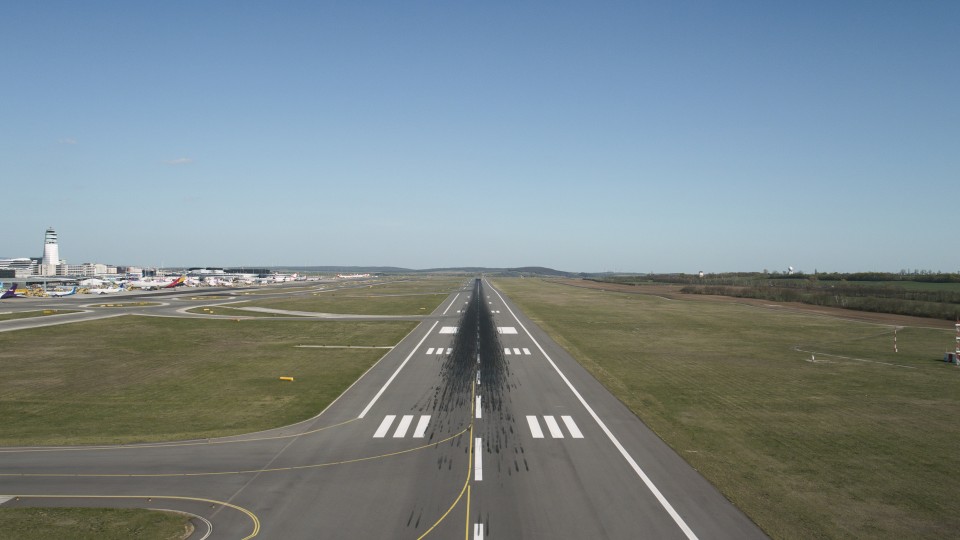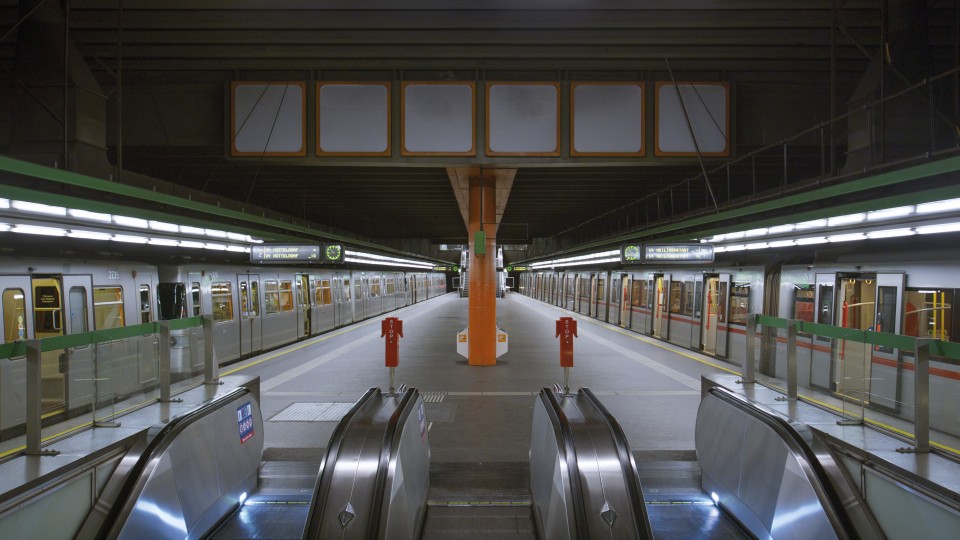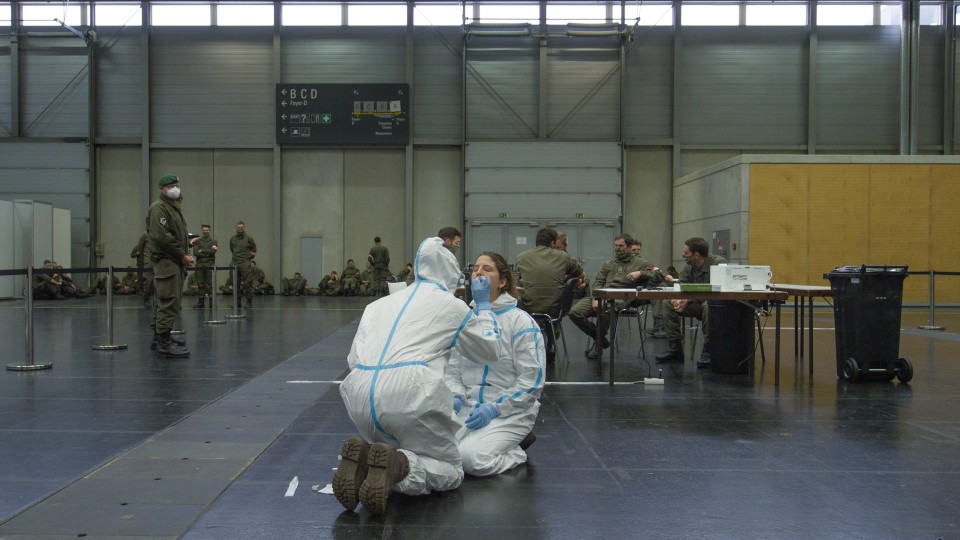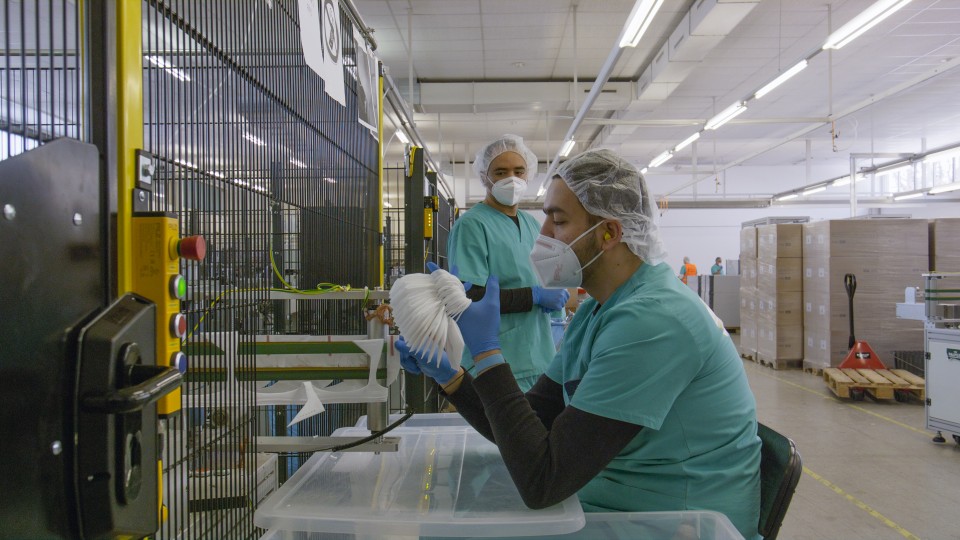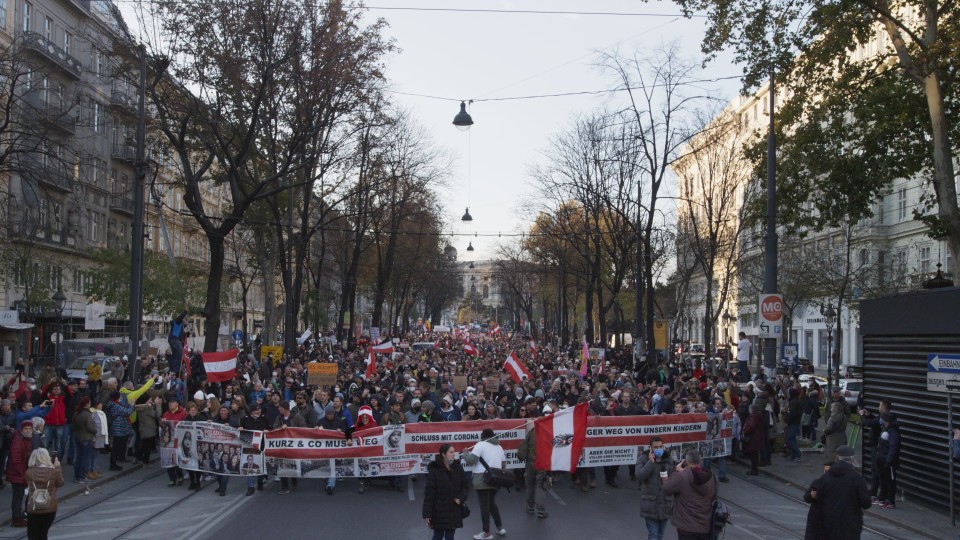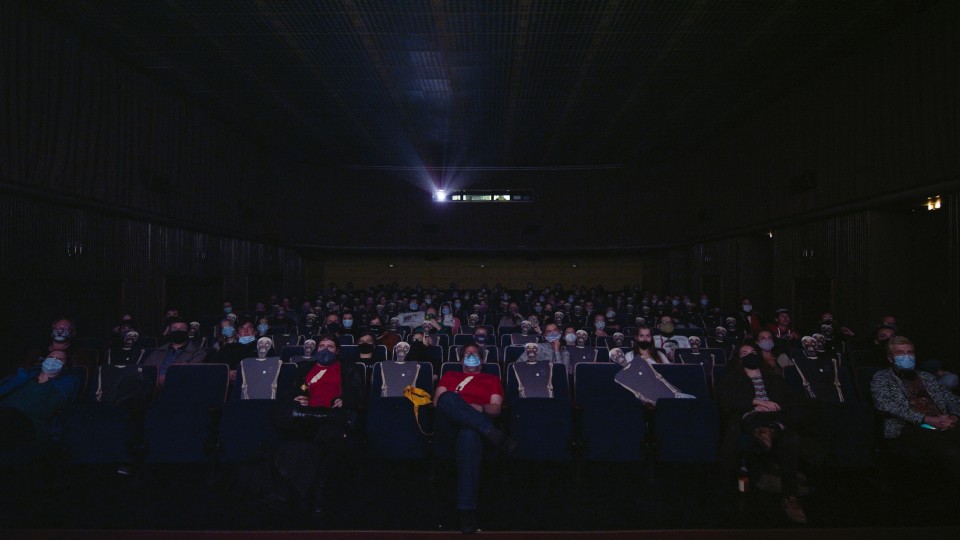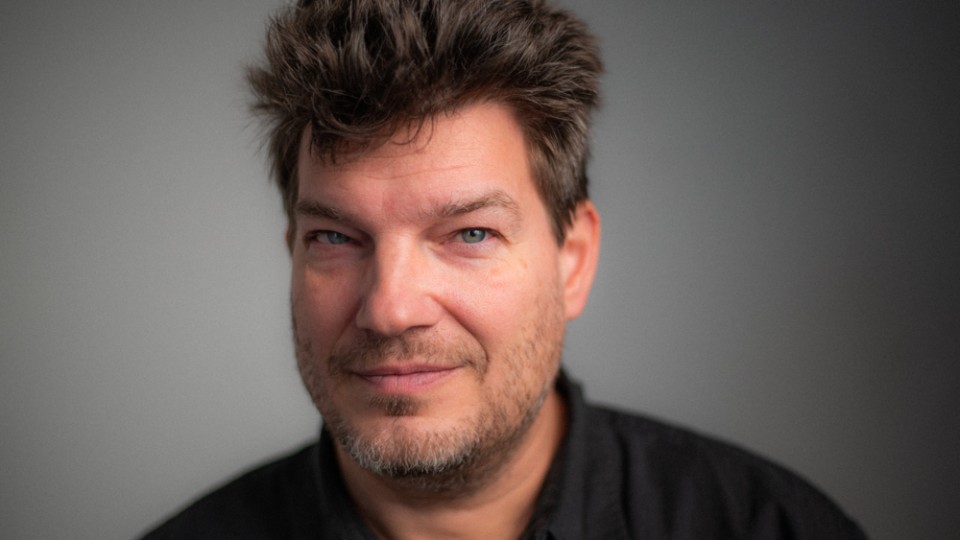Nikolaus Geyrhalter’s perspective is the long shot. If something attracts his interest, he takes a cross-border, often world-embracing
look at burning issues of global coexistence. When Covid reduced freedom of movement for all of us to a minimum, he captured
the state of emergency in Vienna with his camera, and in THE STANDSTILL he confronts us with the fragility of our supposed security.
In mid-March 2020 Austria was in lockdown due to Covid, and our usual everyday life suddenly ground to a halt. How quickly
did you decide to shoot the first sequences for this film?
NIKOLAUS GEYRHALTER: At the very beginning everything came to a halt for me too, and I think I wasn’t the only one who felt strongly that there
was a theme in the air. But I probably wouldn't have reacted so quickly if the dramaturge Claus Philipp hadn't contacted our
production company and urged us to start capturing this exceptional situation on film – right away, more or less. Normally,
films are developed and financed in various stages before you start shooting. There was no time for that here. We had the
necessary equipment in the company; borrowing would hardly have been possible at that time. So we started filming relatively
quickly, at our own risk, to make sure we didn’t miss the most exciting phase of the state of emergency.
Nobody had any idea what a long haul we were facing. What ideas and perspectives did you have when you embarked on the shoot?
NIKOLAUS GEYRHALTER: One idea was the question of how a country or a city continues to function in a state of emergency, when most people couldn’t
leave their homes, at least during the first lockdown. I was also interested – at least at the city level – in how politics
works in a situation like that, and how decisions are made when things have to be rethought every day. There’s a simple way
of explaining what we wanted to film: what’s different? That was basically it. We focused on institutions that functioned
in their own way during this unexpected situation, or in some cases had to function for the first time. At the end of the
day, it was all about capturing this special time; I sensed it was demanding a lot from everyone, and that people would like
to forget or suppress it quickly afterwards. I also felt within myself the task of the chronicler.
Your films seldom feature conversations with protagonists. Why is it important in THE STANDSTILL to let people have their
say?
NIKOLAUS GEYRHALTER: I have to correct that generalisation. I have made three films that don’t have people being interviewed, but all the others
do. It's just that the films without interviews are more memorable, because it's unusual. In general, I like to have conversations.
Every now and then it turns out that the interviews don't deliver what was expected on the basis of the setting. Then you
have to be radical. But it's really not that I want to make films without words. With THE STANDSTILL, it was clear that I
wanted to interview people. The film is about the impact of the situation on people and, above all, about their personal experiences,
both private and professional. It wouldn’t have been possible to depict that with images alone.
What emotions did you encounter? There are several times during the interviews when we sense a hope that society could be
restarted from this zero hour.
NIKOLAUS GEYRHALTER: That hope really was often expressed at the beginning: how beautiful the sky is without planes, how pleasant it is to ride
a bike without heavy traffic. There was the idea that some of this could be retained in the post-pandemic period. Initially,
this illusion was necessary for all of us to survive the whole thing. In the protests that took place later, we noticed that
there was a lot of anger. Many people had suffered from solitude. The search was on for culprits. The illusions of the early
days, as we can already see, were very quickly disappointed. The world works just as it used to, merely a little faster, and
there are new problems. Apparently, it took a war for us to perceive the pandemic as over.
In THE STANDSTILL, unlike other films of yours, you don’t adopt a global perspective on the themes involved. The film was
made in a situation where the restricted geographical area was a given. Did you nevertheless attempt to grasp the overall
picture as exemplified on a small scale?
NIKOLAUS GEYRHALTER: Vienna and Austria, as featured in THE STANDSTILL, are representative of many cities and countries where the situation was
similar: Covid wasn’t quite as bad as had been feared initially, but still bad enough. I never thought about making a big
film, certainly not one on a global scale. To be honest, when I started shooting, my idea was to capture these images for
posterity. I had the feeling what was happening here should be recorded, so that when something like this happens again a
hundred years from now, there will be images of it. We hardly have any pictures of the Spanish flu. And then the project grew.
On the one hand, there was an unprecedented event, and for my part, the experience of capturing something like this even under
difficult conditions became routine. That was enough to get me to work.
How did you, as a team, deal with the fatigue and the unexpected duration of the pandemic?
NIKOLAUS GEYRHALTER: It certainly was exhausting for everyone. The film isn’t just about official institutions; it also features my son's school
class, for example, where they spent two years alternating between mask on and mask off, homeschooling and face-to-face teaching.
And, of course, the nose tests every morning. It was exhausting for everyone. And for us as a film team, too, because there
was no end to it. For a long time, we’d wonder to ourselves when and how the film would end. In the end, the pandemic became
less and less tangible, and there wasn’t much to report apart from demonstrations and dissatisfaction. We decided, with the
necessary distance in the editing, to end the film in a relatively early pandemic phase, after about a year and a half.
This also means that the film creates two perspectives: on the one hand, the view from the middle of the catastrophe, when
everyone just had to act in the short term, with little previous experience, and at the same time a retrospective from a distance,
where we know many things better.
NIKOLAUS GEYRHALTER: The view changes again and again over time. We started editing at a very early stage, when we were still in the middle of
the pandemic, and we ourselves had a completely different view of it. With every six months that passed, the view changed,
which meant the perspective for editing changed too, and that will continue to change. During the trial screenings, we experienced
very strongly that everyone had their own personal experience of this Covid pandemic, and they wanted to see that perspective
again. The film can’t fulfil that expectation and doesn’t want to. But I get the sense that nobody remains indifferent: some
people emerge from the film moved, others angry, others with smiles on their face. Everyone is taken on this journey through
time.
Precisely because everyone has such an individual perception of the events, one interesting aspect is the official crisis
communication. What did you want to capture there?
NIKOLAUS GEYRHALTER: We were interested in what was suddenly different. Consequently, communication policy was part of this. Communication has
become a major issue, both privately and professionally. The extent to which official communication policy was designed to
appeal to the population is indicated by our footage of government press conferences. We also have interesting interviews
on this subject, but unfortunately, we couldn’t include them in the film due to the amount of material. We were also much
more interested in the work of the Federal Government, but we couldn’t gain access to it, even though we were able to get
footage of the then Minister of Health, Rudolf Anschober. The public figure of the pandemic was Sebastian Kurz, the Federal
Chancellor, and the way he now comes across – aloof and only on the screen – is, I believe, a fair depiction of the situation.
THE STANDSTILL also shows how a high level of restrictions prompts disorderly forces to develop a growing dynamic. When did
the demonstrations start?
NIKOLAUS GEYRHALTER: They started relatively early. The first demonstration we shot took place at the State Opera, initially against the Covid
measures. In the beginning, people took to the streets because they didn't want to be told what to do; later it was about
opposition to vaccination and the government in general. In the last demos that we show in the film, the themes have become
quite universal and are directed against all sorts of targets. Covid created a fertile soil for this: people learned that
if they organize themselves, they can make their voices really loud. It is not surprising that something like this is quickly
co-opted by political groups.
Do you feature opposition only in the form of mass demonstrations, or did you also have conversations with individual demonstrators?
NIKOLAUS GEYRHALTER: We couldn't avoid talking to people. If only because we were confronted more and more as we stood there with a camera. In
the end, people with cameras were regarded as absolute enemies. By the last demos, working had become really uncomfortable
for us. I film using long shots, often from above, which means I’m standing on the roof of a car, for example, or I bring
a big ladder with me and then face in one direction for a long time. That makes us visible for extended periods, like a lighthouse.
I found myself in long discussions with people, so in the end I was spending more time talking than filming. There was a universal
anger.
In terms of the many aspects of maintaining the system, as well as the individual handling of the exceptional pandemic situation,
the film raises a fundamental question: how quickly is our overall ability to function placed in jeopardy?
NIKOLAUS GEYRHALTER: I see this as a great awakening – because it shows how quickly our system can collapse. Very quickly, in fact. In this case,
the cause was a worldwide pandemic, but there could be other causes too. The sense of certainty we cherished beforehand, which
we are already beginning to wallow in again is, in my opinion, based solely on the principle of hope.
There are enough scenarios that could happen and hopefully won't.
Our existence depends on a very complex interplay of many factors. As soon as something fails, it quickly results in a sizeable
drama. We may have learned this from the pandemic. But I have the impression that we’re all just happy it’s over – and we’re
not prepared to learn any major lessons from it.
Interview: Karin Schiefer
September 2023
Translation: Charles Osborne

